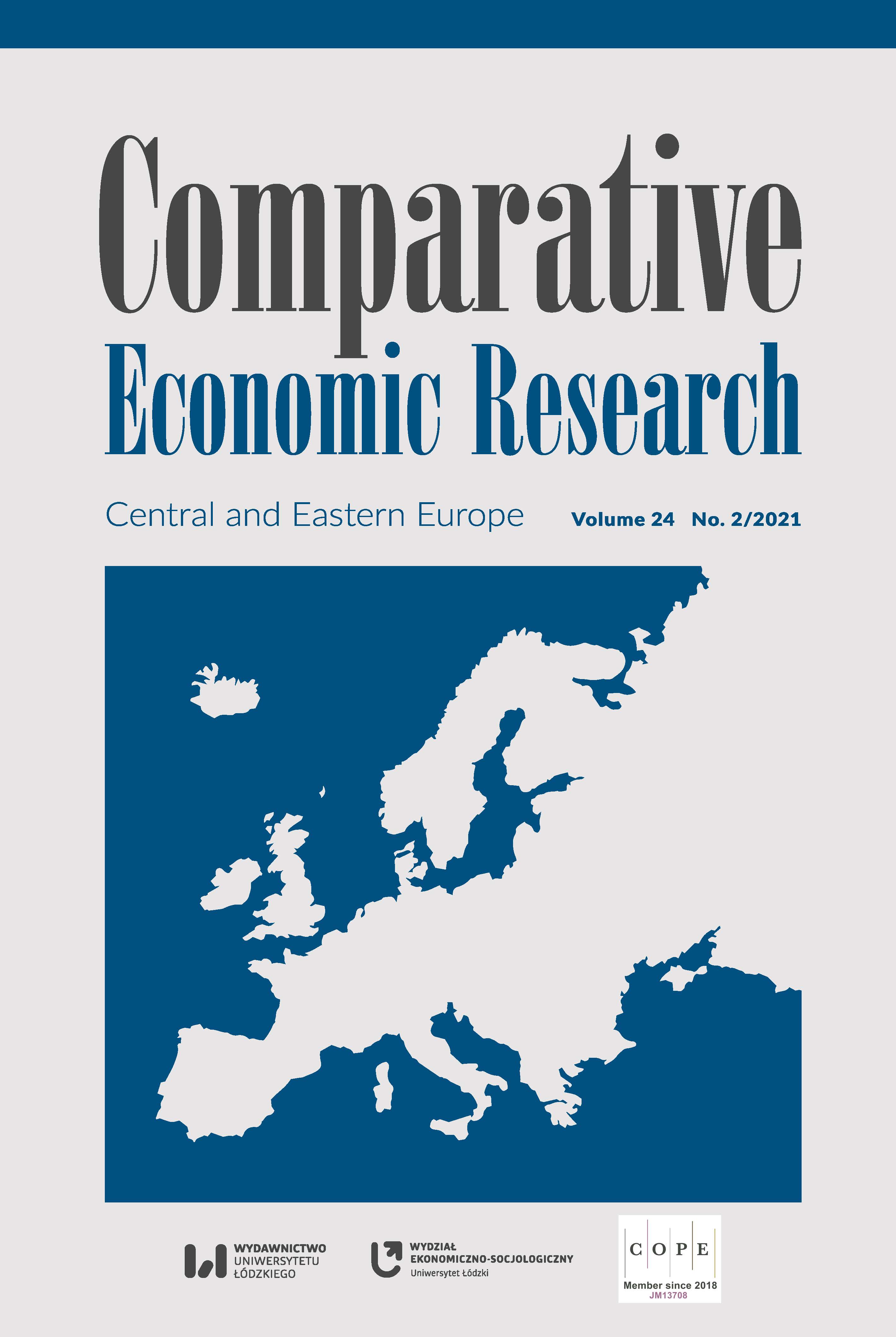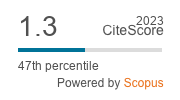The Restructuring of the European Pharmaceutical Industry between 2000 and 2018
DOI:
https://doi.org/10.18778/1508-2008.24.14Keywords:
pharmaceutical industry, labor productivity, growth, Visegrád countriesAbstract
To meet the requirements of global competition, the European Union (EU) places particular emphasis on the development of knowledge‑intensive, innovative industries. The pharmaceutical industry, as a high‑tech manufacturing subsection, has a long tradition in Europe. However, the distribution of pharmaceutical industry employment and value added is not even within the Union, and its temporal dynamics is also different.
In the present paper, I examine the change of the structure of the pharmaceutical industry within the Union using country groups. I compare the development of pharmaceutical industry employment in the period between 2000 and 2018 in three country groups. I use a simple decomposition method to separate the effects of sector growth and labor productivity change on the change of pharmaceutical employment to find out how similarly this industry evolved in the different country groups. The analysis shows that while in the 12 original, i.e., pre–2004, member states (Core EU), employment slightly increased alongside a considerable increase in value added, the nine post‑socialist countries (PS9) achieved slightly greater value added expansion combined with substantial employment growth. Meanwhile, the four Visegrád countries (V4) achieved a value added growth similar to the PS9, but an even greater employment growth. This indicates that the part of the pharmaceutical industry operating with higher labor productivity is concentrating in the Core EU countries, while in the less developed post‑socialist countries, the part of the pharmaceutical industry with lower labor productivity is developing.
Downloads
References
Albu, N., Mecke, M., Ostwald, D.A., Zubrzycki, K. (2016), The Economic Footprint of Selected Pharmaceutical Companies in Europe, EFPIA – WifOR Research Report, https://www.efpia.eu/media/25820/the-economic-footprint-of-selected-pharmaceutical-companies-in-europe.pdf (accessed: 12.07.2018).
Google Scholar
Cantore, N., Clara, M., Lavope, A., Soare, C. (2017), Manufacturing as an engine of growth: Which is the best fuel?, “Structural Change and Economic Dynamics”, 42 (9), pp. 56–66, https://doi.org/10.1016/j.strueco.2017.04.004
Google Scholar
DOI: https://doi.org/10.1016/j.strueco.2017.04.004
Coad, A., Vezzani, A. (2017), Manufacturing the future: is the manufacturing sector a driver of R&D, exports and productivity growth?, “JRC Working Paper on Corporate R&D and Innovation”, No. 06, Joint Research Centre.
Google Scholar
Cohen, W.M., Nelson, R.R., Walsh, J.P. (2000), Protecting their Intellectual Assets: Appropriability Conditions and Why U.S. Manufacturing Firms Patent or Not, “NBER Working Paper”, No. 7552, https://doi.org/10.3386/w7552
Google Scholar
DOI: https://doi.org/10.3386/w7552
ECORYS (2009), Competitiveness of the EU Market and Industry for Pharmaceuticals. Volume I: Welfare Implications of Regulation. Final report, https://publications.europa.eu/en/publication-detail/-/publication/2c28ce31-3630-40e6-9743-006864229bf4/language-en (accessed: 10.06.2018).
Google Scholar
European Commission (2008), Safe, Innvative and Accessible Medicines: a Renewed Vision for the Pharmaceutical Sector, COM(2008) 666 final, Brussels.
Google Scholar
European Commission (2010), EUROPE 2020. A strategy for smart, sustainable and inclusive growth, COM(2010) 2020 final, Brussels.
Google Scholar
European Commission (2014), Pharmaceutical Industry: A Strategic Sector for the European Economy, Commission Staff Working Document SWD(2014) 216 Final/2, Brussels.
Google Scholar
European Commission (2016), Communication from the Commission to the European Parliament, the Council, the European Economic and Social Committee and the Committee of the Regions. Digitising European Industry Reaping the full Benefits of a Digital Single Market, COM(2016) 180 final, Brussels.
Google Scholar
Fujita, M., Thisse, J.‑F. (2009), New Economic Geography: An appraisal on the occasion of Paul Krugman’s 2008 Nobel Prize in Economic Sciences, “Regional Science and Urban Economics”, 39 (2), pp. 109–119, https://doi.org/10.1016/j.regsciurbeco.2008.11.003
Google Scholar
DOI: https://doi.org/10.1016/j.regsciurbeco.2008.11.003
Garattini, L., Curto, A., Freemantle, N. (2016), Pharmaceutical Price Schemes in Europe: Time for a “Continental” One?, “PharmacoEconomics”, 34 (5), pp. 423–426, https://doi.org/10.1007/s40273-015-0377-5
Google Scholar
DOI: https://doi.org/10.1007/s40273-015-0377-5
http://ec.europa.eu/competition/sectors/pharmaceuticals/inquiry/communication_hu.pdf (accessed: 29.05.2018).
Google Scholar
Malerba, F., Orsenigo, L. (2015), The evolution of the pharmaceutical industry, “Business History”, 57 (5), pp. 664–687, https://doi.org/10.1080/00076791.2014.975119
Google Scholar
DOI: https://doi.org/10.1080/00076791.2014.975119
McMillan, M.S., Rodrik, D. (2011), Globalization, structural change and productivity growth, “NBER Working Paper”, No. 17143, https://doi.org/10.3386/w17143
Google Scholar
DOI: https://doi.org/10.3386/w17143
Nagy B., Lengyel, I. (2016), The Structural Change of Manufacturing in Hungary, 2008–2014, “Studies in International Economics”, 2 (2). pp. 3–27
Google Scholar
Presentation of the Preliminary Report of the Pharma Sector Inquiry (2008), http://ec.europa.eu/competition/sectors/pharmaceuticals/inquiry/higgins.pdf (accessed: 29.05.2018).
Google Scholar
Schweizer, S.O., Lu, Z.J. (2018), Pharmaceutical Economics and Policy. Perspectives, Promises and Problems, Oxford University Press, Oxford, https://doi.org/10.1093/oso/9780190623784.001.0001
Google Scholar
DOI: https://doi.org/10.1093/oso/9780190623784.001.0001
Tregenna, F. (2013), Deindustrialization and Reindustrialization, [in:] A. Szirmai, W. Naudés, L. Alcora (eds.), Pathways to Industrialization in the Twenty‑First Century. New Challenges and Emerging Paradigms, Oxford University Press, Oxford, pp. 76–102, https://doi.org/10.1093/acprof:oso/9780199667857.003.0003
Google Scholar
DOI: https://doi.org/10.1093/acprof:oso/9780199667857.003.0003
Vajda, B., Horváth, S., Málovics, J. (2012), Közös döntéshozatal, mint innováció az orvos‑beteg kommunikációban, [in:] Z. Bajmócy, I. Lengyel, Gy. Málovics (eds.), Regionális innovációs képesség, versenyképesség és fenntarthatóság, JATEPress, Szeged, pp. 336–353
Google Scholar
Downloads
Published
How to Cite
Issue
Section
License

This work is licensed under a Creative Commons Attribution-NonCommercial-NoDerivatives 4.0 International License.











